There is another type of vehicle that depends upon motion to develop lift. It blends the aerodynamics of an aircraft with the hydrodynamics of a ship. This vehicle is called a hydrofoil.
The hydrofoil is a cross between the ship it looks like and the airplane it is built like. It's raised above the water by small, wing-like foils. These foils (like aircraft wings) work on Bernoulli's principle. The water streaming over the curved upper surface has to move faster than that flowing beneath. This causes low pressure above and high pressure below the foil. At a given speed the lift generated by the foils raises the hull of the ship bodily out of the water.
Hydrofoil ship hulls are generally constructed using high-grade aluminium alloys, as the hull must have the strength to resist wave impact at high speed as well as distribute the concentrated load at the strut attachment points. Modern hydrofoil ships have been made possible by the development of lightweight diesel engines and marinized gas turbine engines As speed is increased, the lifting force generated by the water flow over the submerged portion of the foils increases causing the ship to rise and the submerged area of the foils to decrease. |
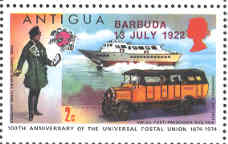 |
|
The first fast ferry entered in service between Sicilia and the Italian continent in August 1956. The first 72 seats PT20 ferry designed by Supramar and built by Rodriquez, stayed in service during more than 30 years. After the PT20, appears in 1959 the PT50 ( 140 seats ) with a speed of 32 knots. |
|
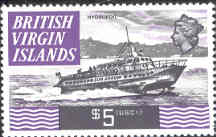
|
SUN ARROW is a PT50 type hydrofoil used from 1968 on Piombino-Porto Ferraio line by Aliscafi SNAV SpA. |
|
FLYING ALBATROS was also a Supramar PT50 type delivered in 1964 to Hong Kong Macao Hydrofoil. |
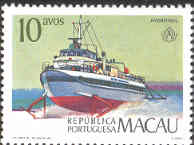
|
|
A total of 7 hydrofoils operated on Sydney Harbour over 26 years in State Transit's fleet, which operated between Sydney and Manly from 1965 to 1991 before being replaced by Incat Jetcats. |
|
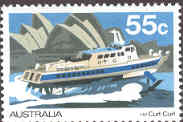
|
CURL CURL was a RHS140 built at Cantieri Navale Rodriquez S.p.A., Messina, Italy.
Delivered in 1972 at State Transit Authority for Sydney-Manly cross, Curl Curl slices through the water, making the eleven kilometre trip from Circular Quay to Manly in about fifteen minutes.140 seats,
Overall Length 29m,
Length at waterline 25m, draught - hull in water 3.4 m, |
Foils are surface V-foils of hollow welded steel construction. Lift of the bow foil may be modified by training edge flaps.
On the RHS160, the hull shape is similar to the RHS140 series and the structure is made of riveted light metal alloy when surface piercing W-foils are of hollow welded steel. The bow rudder works simultaneously with the aft rudders. Hydraulically operated flaps, attached to the training-edges of the foils are adjusted automatically by an electronic stability augmentation system. |
|
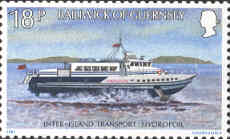
|
| CONDOR 5, a RHS160 built in 1974,
carries 180 passengers at 33 knots, renamed SANTORINI DOLPHIN in 1998 |
|
CONDOR 7, a RHS 160F operated by Condor between Jersey and St.Malo, with connection to Guernsey and Weymouth flies at first in 1985: journey time to St.Malo from Jersey is 70 minutes for 200 passengers, and landmarks of both provide a composite skyline as background to the hydrofoil currently in service. |
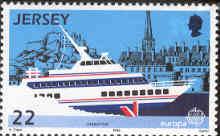
|
|
On all these hydrofoils, power is transmitted to bronze or bronze aluminium 3 blades propellers. At the end of the 70's, appeared a new kind of propulsion: engine output is transferred to controllable-pitch propellers ; hydrofoils become jetfoils. |
|

|
PRINCESSE CLEMENTINE and PRINCESSE STEPHANIE are in service
from 1981 to 1997 between Ostende and Douvres at 38 knots for the RTM.
|

|
|
Boeing entry into the hydrofoil field occurs when the aircrafts manufacturer awards a contract for the US navy. Boeing jetfoils represents a most significant step in high-speed craft technology. Two types have been built: a 235 ton patrol boat and a jetfoil of which, by January 1990, 39 had been built or ordered. |
|
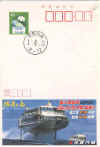
|
|
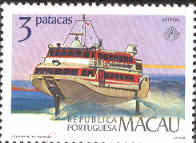
|
The 929-115 was the same type as 929-100 (first launch March 29, 1974); it was the second production of jetfoils and could carry more passengers at a maximum speed of 45 knots.
Main characteristics:
Length ( LOA ) 27.44 m Draught, strut down 5.40 m
Length between perpendiculars 23.98 m Draught, strut up 2.20 m
Beam 8.53 m Depth. moulded 2.59 m
Gross Tonnage 267 Net Tonnage 100
Total capacity 240 seats Super class capacity 32 seats
Economy class capacity 204 seats VIP cabin capacity 4 seats
Building Material Aluminium alloy
Engines 2 x Perkins 6.354 marine type 105 bhp |
TERCEIRA was a jetfoil type 929-115 built by Boeing for Turbojet service between Hong-Kong and Macao from January
1979.
Propulsion System is made of two free-power gas turbines, each connected to an axial flow pump through a gearbox train. The pumps discharge the water in nozzles in the hull bottom. The system propels the craft in both foilborne and hullborne
modes |
|
Even a lot of hydrofoils and jetfoils have been retired of service, some ones continue to be used for short and quick links, as the connections between continental Italy or Greece and some islands.
Other pages to read: the hovercrafts and the catamarans |










 MENU
MENU 
